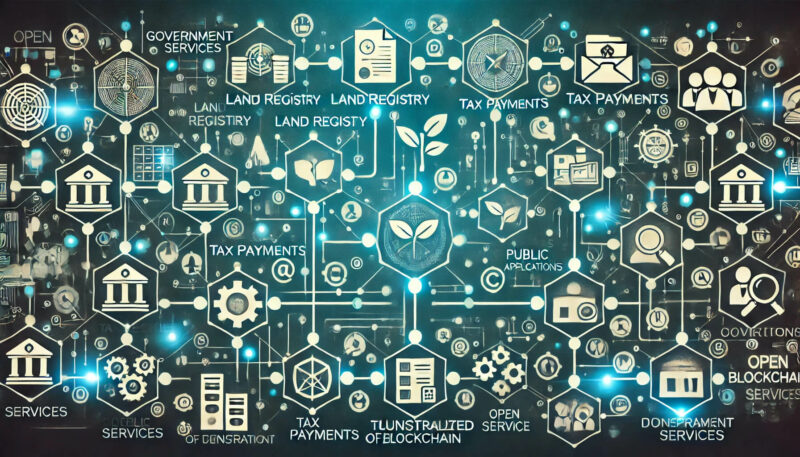The demand for greater transparency and accountability in government continues to rise. Citizens want clearer insights into how their governments manage public funds, make decisions, and execute policies. Unfortunately, many traditional systems lack the clarity needed to prevent corruption, inefficiencies, and public distrust.
Blockchain technology, with its decentralized, transparent, and secure ledger system, offers a way to improve government transparency. Blockchain can ensure that government actions, records, and transactions are secure, accessible, and tamper-proof.
This article explores how blockchain can enhance government transparency and why this technology is key to building trust and accountability.
The Problem with Traditional Government Systems
Governments worldwide rely on centralized systems to manage processes such as budgeting, contracts, voting, and public records. While these systems have served governments for decades, they present several challenges:
- Lack of Accountability: Centralized systems often make it difficult for citizens to track public spending or understand how decisions are made.
- Risk of Corruption: Centralized systems create opportunities for corrupt officials to manipulate processes. Fraud, bribery, and embezzlement can remain hidden in closed systems.
- Inefficiency: Many government processes involve excessive bureaucracy, slowing down decision-making and wasting public resources.
- Data Insecurity: Centralized databases face the risk of hacking and data breaches, putting sensitive government information at risk.
These challenges highlight the need for a more transparent, secure, and efficient system for managing government functions.
How Blockchain Improves Government Transparency
Blockchain works as a decentralized ledger, recording transactions and data across a network of computers (nodes). Each transaction forms a “block” that links to the previous one, creating a chain. Once recorded, data becomes permanent and immutable, preventing tampering and enhancing transparency.
Here’s how blockchain can improve transparency in government:
1. Immutable Records
Blockchain’s immutability ensures that once data is added, no one can change or delete it. This creates a clear, tamper-proof record of government activities, such as financial transactions, contracts, and legislative actions.
Example: Governments can use blockchain to track public spending. Every payment, from infrastructure projects to social services, can be recorded on a public blockchain ledger. Citizens can then verify these transactions and see how public funds are spent.
2. Public Access to Information
Blockchain operates as a public ledger, meaning citizens can monitor government activities in real-time. With blockchain-based transparency tools, people can track government contracts, voting records, and budgets without relying on intermediaries.
Example: Estonia leads the way in using blockchain for government transparency. Its blockchain-powered e-governance system allows citizens to access personal data and government services, resulting in higher public trust and an open government.
3. Corruption Prevention
Corruption thrives in opaque systems. Blockchain’s transparency makes it difficult for individuals to engage in corrupt practices. Every transaction is publicly recorded and easily audited, which reduces opportunities for fraud, bribery, and embezzlement.
Example: In countries struggling with corruption in public procurement, blockchain can create a transparent bidding process. Each step of the bidding process is recorded on the blockchain, ensuring that contracts are awarded fairly and without bribery.

4. Efficiency and Public Trust in Services
Blockchain can simplify government services, reducing bureaucracy and speeding up tasks like issuing licenses, managing public records, or processing tax returns. Smart contracts—automated digital agreements that execute when conditions are met—help eliminate manual tasks, increasing both efficiency and public trust.
Example: Dubai’s Blockchain Strategy aims to use blockchain to handle 100% of government services by 2030. The initiative seeks to eliminate paper-based processes and improve service delivery, making the government more efficient.
5. Transparent Voting Systems
Elections are critical to democracy but are often vulnerable to manipulation and fraud. Blockchain-based voting can ensure secure, transparent elections by recording each vote on a public blockchain. Voters can verify their votes, while the decentralized system ensures that no one tampers with the results.
Example: West Virginia piloted a blockchain-based voting system in 2018, allowing military personnel stationed abroad to cast votes securely. Blockchain recorded every vote, providing confidence that all votes were counted accurately.
Real-World Blockchain Applications in Government
Several governments are already implementing blockchain to increase transparency and accountability:
1. Estonia’s E-Governance
Estonia’s e-Estonia initiative uses blockchain to offer various government services, from voting to tax filings. Blockchain secures digital identities and ensures that citizens’ data cannot be altered, creating a more transparent government system.
2. Georgia’s Land Registry
Georgia implemented a blockchain-based land registry system to combat corruption and inefficiencies in property transactions. Blockchain ensures that land ownership records are transparent and tamper-proof, providing more trust in property transactions.
3. Sweden’s Real Estate System
Sweden tested a blockchain system to digitize its land registry and real estate processes. Blockchain lets buyers, sellers, and government officials track real estate deals in real-time, reducing fraud and increasing efficiency.
Challenges to Blockchain Adoption in Government
Despite its potential, blockchain adoption in government faces several challenges:
- Scalability: Governments manage vast amounts of data, and blockchain must handle these large-scale databases efficiently.
- Costs: Implementing blockchain systems can be costly, particularly for governments with limited resources.
- Technical Expertise: Governments need expertise to develop and maintain blockchain solutions, which requires training and investment in new skills.
- Resistance to Change: Some government organizations may resist adopting blockchain due to a reluctance to change established processes.
However, as blockchain technology continues to evolve, these challenges are likely to be addressed, making wider adoption possible.
Conclusion: Building Public Trust Through Blockchain
Blockchain can play a significant role in improving transparency, accountability, and trust in government. By providing immutable and publicly accessible records, blockchain can reduce corruption, streamline services, and give citizens greater insights into how their governments operate. As more governments adopt blockchain, we may witness a shift toward more open and efficient public systems.
For more insights and detailed guides on blockchain’s role in government transparency, visit our Blockchain and Government Guides.
Stay Updated
For the latest updates on blockchain technology and its applications in governance, follow us on:
Stay informed with the latest strategies and insights in the world of blockchain at FreeCoins24.io.
Special Offer
Interested in exploring blockchain solutions for transparency in governance? Sign up on Bybit today and enjoy up to $30,000 in deposit bonuses. Start learning how blockchain can create more transparent systems!

















